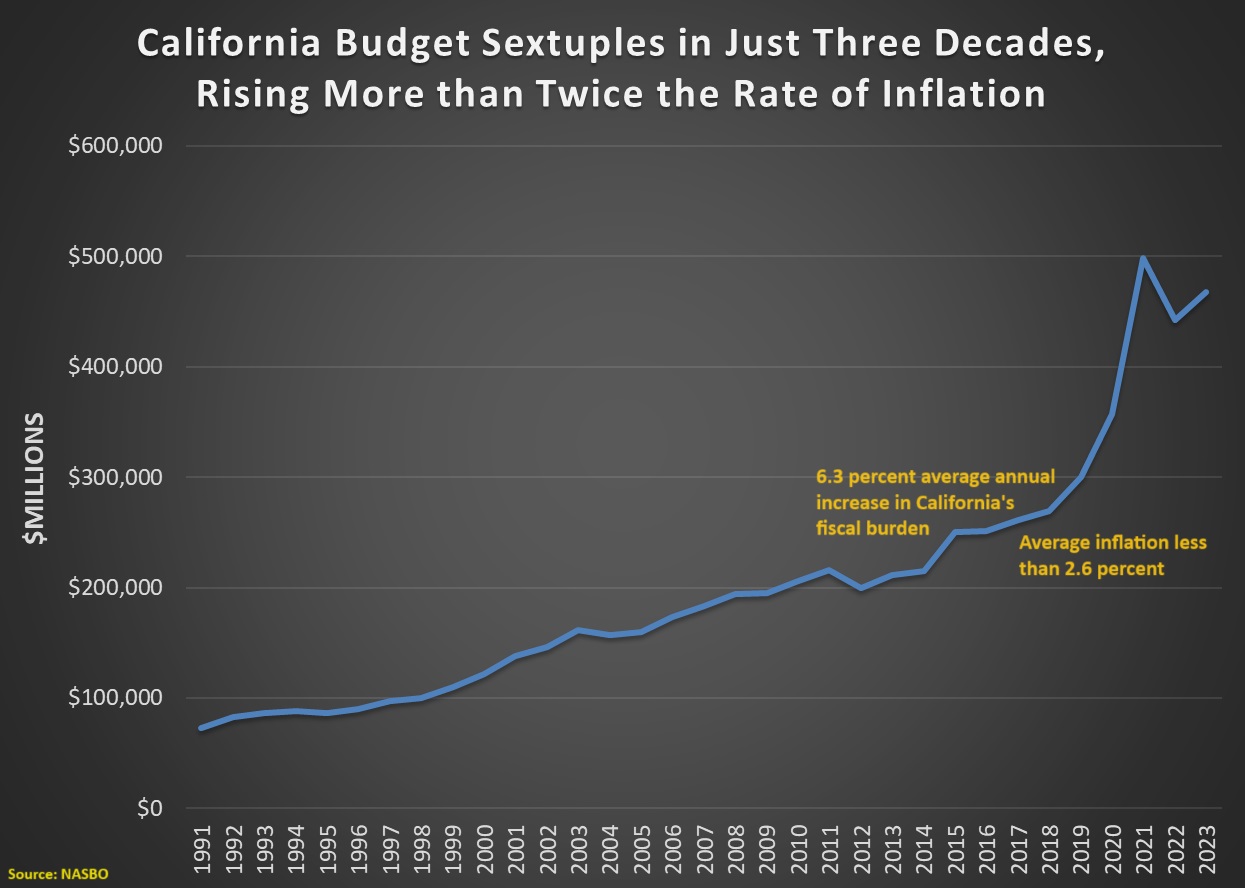Two days ago, I shared some California humor. Today, we’re going to look at some California tragedy.
I’ve often explained that the most important variable in fiscal policy is the the growth of government, More specifically, good fiscal policy occurs when the burden of government spending over time grows slower than the private sector.
As you can see from this chart (based on data from the National Association of State Budget Officers), California has the opposite of good fiscal policy.
At the risk of understatement, it’s not good when government grows more than twice as fast as inflation.
I was motivated to create this chart after reading this article in National Review.
Written by Will Swaim, it discusses how California got in trouble. It starts by looking at how red ink forecasts have dramatically worsened ins a very short period of time.
In the summer of 2022, California governor Gavin Newsom, apparently high on the smell of cash, announced that California had just smashed through the state-budget equivalent of the first four-minute mile: a one-year surplus of $100 billion. …Just one year later, Newsom announced — this time without the trumpet blasts, chest-thumping and press tour — that California was $32 billion in the red.
Today, the governor is staring into the business end of a $78 billion deficit. You didn’t have to be a prophet to see the financial chaos coming. In this state’s notoriously mercurial tax system, which depends largely on revenue from just 150,000 wealthy Californians and massive, occasional paydays to investors in the state’s tech sector, what went up in 2022 was certain to fall hard, fast, and soon.
But volatile tax revenues are not the problem.
California is in trouble because of too much spending. Governor Newsom and other politicians in Sacramento can’t resist buying votes in every possible way.
…back in 2022, when Newsom was still feeling like the casino’s biggest whale, he spent as if there’d be money forever, boosting spending to $308 billion, more than double Jerry Brown’s last, 2019 budget of $140 billion. In the Year of the Historic Surplus, there were gifts for almost everyone and a soundtrack of Vegas slots paying off. …He announced that the state will pay $5 billion to cover health-care insurance for illegal immigrants.
And though he has already spent a remarkable $20 billion to reduce homelessness — while the number of people on the street continues to grow — Newsom asked voters on March 5 to approve a $6.4 billion bond program that would feed California’s voracious homelessness–industrial complex but almost no one else.
I did a poll back in 2018 about which state will be the first to go bankrupt. Illinois has a big lead, for understandable reasons. But you won’t be surprised to see that California is in second place, ahead of even the basket case of New Jersey.
P.S. The NR article discussed the volatility of tax revenues. Because of its class warfare-based tax system, California is especially vulnerable to big swings in tax revenue (and big revenue losses because of successful people fleeing the state). But this is also a nationwide challenge, which helps to explain why a spending cap (like Colorado’s TABOR) is a much better policy than a balanced budget rule.

No comments:
Post a Comment